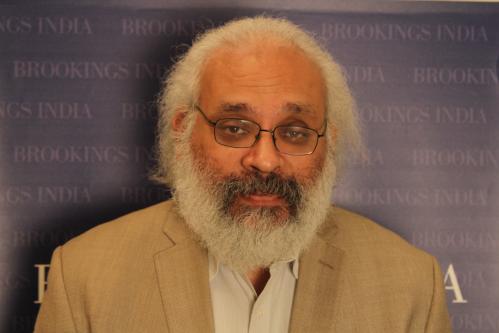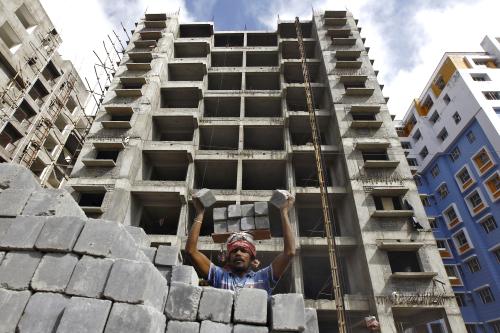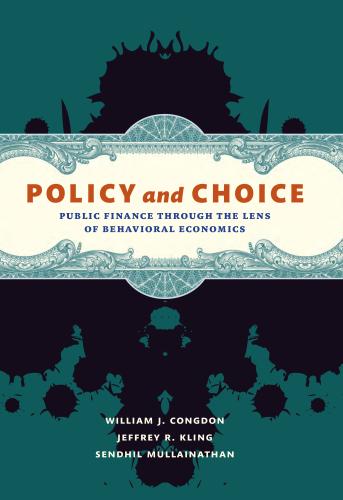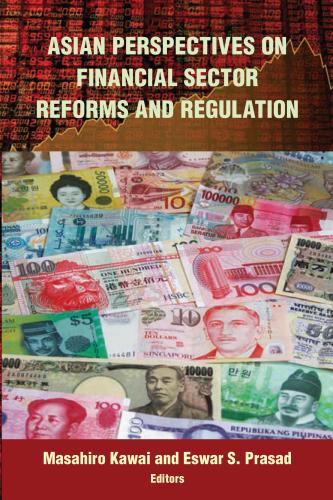Content from the Brookings Institution India Center is now archived. After seven years of an impactful partnership, as of September 11, 2020, Brookings India is now the Centre for Social and Economic Progress, an independent public policy institution based in India.
Recent developments indicate that a new financial architecture that replicates the Bretton Woods framework in functionality is being built in Asia, with China playing a pivotal role. Their prospects for success will depend on the organisational and governance structures that are put in place for the new institutions that will comprise the Asian framework.
Although, of the new institutions being set up, strictly speaking, only the Asian Infrastructure Investment Bank has an exclusively regional identity, I would include the New Development Bank, the associated Contingent Reserve Arrangement. Here are three sets each of opportunities and challenges for the Asian financial architecture.
Focussing on long-term development finance, the most significant opportunity is going to be provided by the “multilateralisation” of regional savings. Bilateral assistance is certainly an option, but comes with well-known limitations and constraints. The lender’s priorities and ability to appropriate benefits in some way will always be a factor in this process. Within a multilateral institutional framework, savings and risks can both be pooled. In a sense, both lenders’ and borrowers’ priorities can be reflected in resource allocations, without a direct association between them. Of course, this is the basic rationale for financial intermediation in the first place. But, what makes it particularly significant in the contemporary Asian context is that the region as a whole is the biggest potential supplier as well as demander of funds for long-term development finance.
The second opportunity relates to the potential synergies from co-ordinated investments between countries. Asia has been a “growth neighbourhood” for a while, meaning that every country in the region can potentially benefit from the growth performance of its close neighbours. But, its materialisation depends on several investments being made, both to enhance domestic capacity and productivity and to create better linkages to proximate resources and markets. This kind of co-ordination has to be based on shared understanding and prioritisation between the countries involved. But it could be reinforced and facilitated by a regional institution that has the capability to both spot the opportunities for collective benefit and, as a consequence of its governance structure, actively help countries design and implement such investment programmes in a co-ordinated fashion.
The third opportunity is with respect to leveraging local knowledge, skills and experience. Looking back over the past couple of decades, it is quite clear that the multilateral institutional framework has become at least as much, if not more than, a purveyor of knowledge as of finance. Exploiting the learning curve based on other countries’ successes and failures is a critical service that such institutions can provide.
Of course, these issues only capture the potential benefits to the participating countries. Their realisation depends on the strategies and resources that the regional institutions put in place.
The first challenge relates to the quantum of funding. Going by funding commitments across the institutions, at this point, there is a huge gap between demand and availability. Of course, it would be naive to expect these institutions to become the dominant source of finance for the Asian region. But, in order to lay claim to the status of a new “architecture”, they have to establish a visible presence relatively quickly. Without this, they will lose credibility, both with their borrower constituency and in the rest of the world. How to leverage the initial funding at a cost low enough to be able to lend at rates attractive to potential borrowers is a question that the new architecture must resolve quickly. If it becomes increasingly dependent on the resources of one or a few countries, the appeal of its apparently multilateral nature will risk being diluted.
The second challenge will be the priority put on sustainability. It took many decades for the incumbent institutions to internalise environmental, social and governance issues and mainstream them into their lending strategies. As onerous and frustrating as these issues sometimes might be, they are central to a viable development strategy, of which the concrete building blocks will be the kind of development projects that this architecture is presumably going to focus on. It would be a suboptimal outcome from both the national and global standpoint if these institutions provided borrowers an escape route from these conditions. It is imperative, therefore, that these they lay down a set of broad sustainability requirements for borrowers to fulfil. The aim should be “sustainability neutrality”, i.e., projects should adhere to a similar (and reasonable) set of standards regardless of where their funds are coming from.
The third challenge is in relation to governance. The “dominant shareholder” model must give way to a more cooperative and collective arrangement. Of course, this is easy to lay out in the abstract and much more difficult to put into practice. But, it is potentially a positive differentiator for the architecture and priority must be put on it. There are two aspects to this. First, there is the set of formal structure of decision processes and rules, which need to reflect the collective approach. Second, there has to be a broad perception that the rules are being followed in spirit. Of course, this has to be balanced against efficient and speedy decision-making. These issues are clearly easier to resolve in the context of a corporate structure than a multi-lateral one, but here is one lesson that the new architecture should learn from the incumbent institutional framework.
The emerging Asian financial architecture represents an effort by the region to take greater control over both the sources and uses of funds for its own development. In doing so, it increases the opportunities for the countries in the region to co-ordinate on mutually beneficial investments, benefitting both individual countries and the region as a whole. But, to make this initiative work, a genuine sense of collective ownership is necessary.
This article was excerpted from remarks made in the panel on “Shaping the Asian Financial Architecture” in the International Conference on Evolving Trade, Finance and Investment in Asia, organised by the Centre on Asia and Globalization, Lee Kuan Yew School of Public Policy, Singapore.










Commentary
Op-edShaping the Asian financial architecture
September 21, 2015